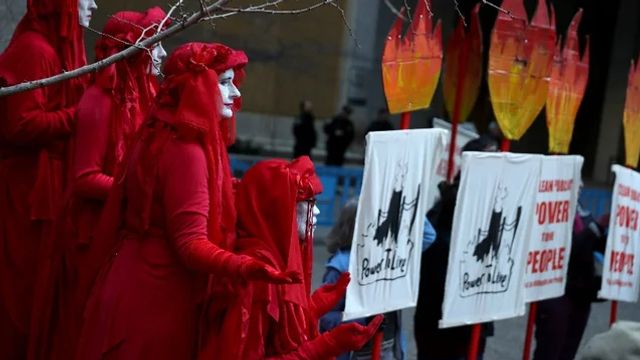Repeating past mistakes could mean lights out for many Americans
Editor’s Note: This is an Op-Ed appearing in The Hill, December 17, 2020

Repeating past mistakes could mean lights out for many Americans
As Congress remains divided on how to — or even whether to — issue additional stimulus and the Biden administration begins planning its pandemic response, 11 million Americans remain out of work and past due housing payments and utility bills are piling up.
We have now squandered seven months since the economic impact of the pandemic became clear without addressing the underlying problem, but Janet Yellen and her incoming leadership team at the Treasury Department have an opportunity to change this dynamic.
 To address the current economic crisis, stimulus must restore circular flow to the economy. And the most impactful way to do that would be for the U.S. Treasury to directly pay electric, phone, cable, broadband, water and heating bills for American households. This can be targeted to those in need of aid, will ensure that the dollars get circulated through the economy, has a built-in multiplier effect and can easily be made self-financing. It meets the demands of fiscal conservatives for prudence and the demands of progressives for immediate and substantial aid.
To address the current economic crisis, stimulus must restore circular flow to the economy. And the most impactful way to do that would be for the U.S. Treasury to directly pay electric, phone, cable, broadband, water and heating bills for American households. This can be targeted to those in need of aid, will ensure that the dollars get circulated through the economy, has a built-in multiplier effect and can easily be made self-financing. It meets the demands of fiscal conservatives for prudence and the demands of progressives for immediate and substantial aid.
However well-intentioned, the first round of stimulus was simply not structured to enable economic recovery. The government spent $3 trillion, but we did not get $3 trillion of economic gains. Rather, 60 percent of the money received through the CARES Act was either saved or used to pay down credit card and other debt. In other words, it did not restore circular flow to the economy.
As a distinguished economist, Yellen has a deep understanding of the economic reality that stands in the way of recovery — my consumption is your income, and your consumption is someone else’s income. Each dollar of GDP changes hands nearly three times on average in the U.S. economy. However, government shutdown policies broke the circular flow of the money through the economy.
The best way to restore that flow is for the federal government to directly pay for goods and services like utility and communications costs, rather than sending cash to people who might choose not to spend it. In return, utility providers would agree not to turn off service while the program is in place. Utilities will then use the money to pay suppliers and initiate projects that, in turn, stimulate economic activity and — giving people money to spend and circulate. The program could be structured to phase out once employment or GDP rises to a certain level.
At a minimum, the program would prevent a flood of utility shutoffs and make it easier for those struggling to pay for other essentials like housing, food and medicine. It would also help reduce the number of past-due bills that need to be repaid before service is restored, ensuring access to the necessities required for remote work and learning, social distancing and proper hygiene. With cold weather now upon us, heating bills will rise in many parts of the country making the situation even more dire, especially given that most energy assistance programs only apply to heating cost and only target low income populations.
It would cost just $60 billion per month to pay all the utilities for every household in the U.S.; the CARES Act cost over $3 trillion. And let’s not forget that the opportunity created by near zero interest rates would be shameful to waste. Using the Treasury to effectively finance this program over a long period of time makes direct payment the fastest and cheapest stimulus option. The government can recoup the costs with a modest 0.5 percent excise tax on utility bills over a 20-year period for each month it is needed. Best of all, the plan restores the circular flow necessary to begin the recovery.
In addition to the efficacy of the program, the speed, flexibility and transparency it would offer are unparalleled. The program can easily be focused to deliver economic outcomes that are needed for recovery and reemployment or provide greater benefits for low income or unemployed people. And because utilities already have rich consumption data and actively monitor for fraud, it would be very difficult to scam the system. That same data can be used to analyze the effectiveness of the program and provide a model for how to implement similar forms of economic stimulus.
We know what will happen if we don’t act. The U.S. economy is no longer in free fall, so let us learn from past mistakes and think differently about how we help Americans who are struggling and how we ensure the country’s economic recovery.
Howard Newman holds a doctorate in business economics from Harvard University and has served as a board director for over 45 companies. He is a cofounder and managing partner of the private investment firm Pine Brook, and a trustee of the Salk Institute for Biological Studies.

